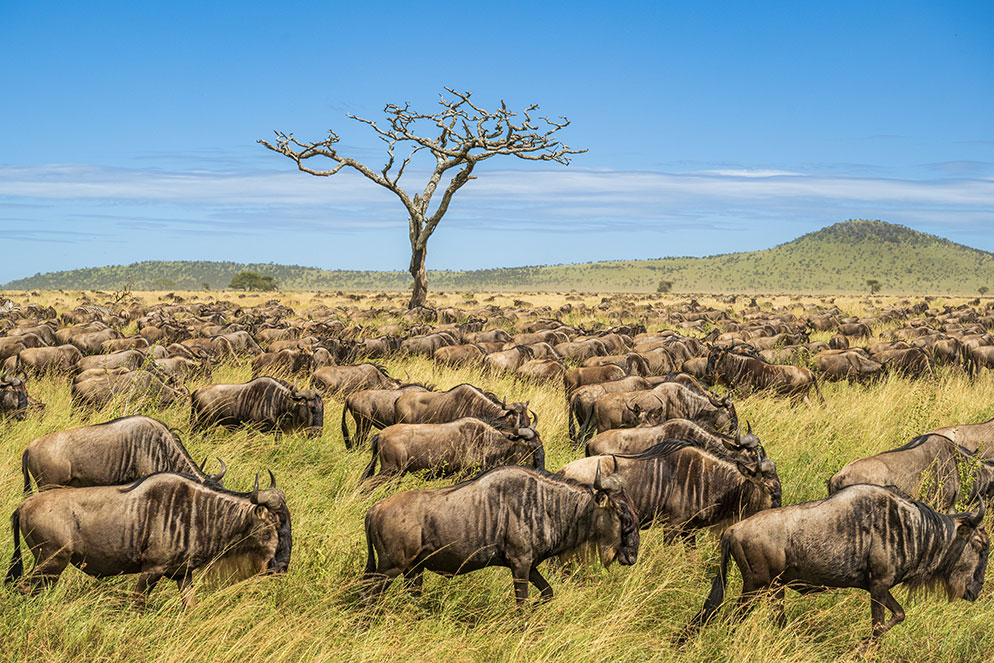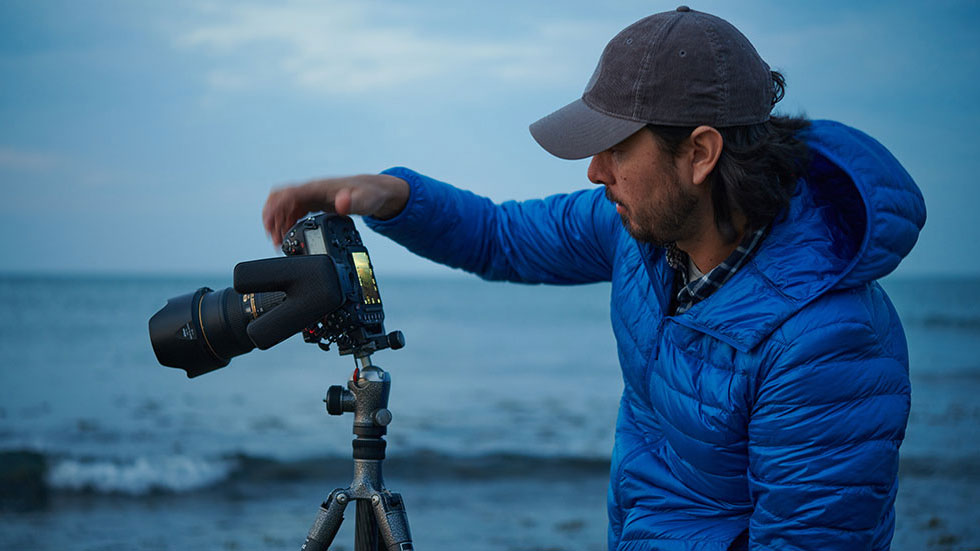Photographing the Great Migration
The Great Migration of wildebeest in the Serengeti in Tanzania. Z 9, NIKKOR Z 24-70mm f/2.8 S at 70mm focal length, 1/1000 second, f/8, ISO 320, Aperture priority.
The wildebeest just keep coming…I’m staring out the window of my dusty Land Cruiser in the middle of the Serengeti, watching an endless stream of animals stretch from one horizon to the next. I’ve come to Tanzania to photograph the Great Migration, and I’ve hit the jackpot. More than a million animals are moving through these endless grassy plains, and I have a front row seat. I watch wildebeest, zebras, gazelles and impala steadily walk past, grunting and pushing forward on their journey. This is sensory overload at its best.
I’ve been to Africa many times, but I’ve never hit the Great Migration so perfectly. With changing climates and unpredictable rainfall, hitting migration can be a challenge. Over two million wildebeest move annually in a big circle through the Serengeti in Tanzania and the Masai Mara in Kenya. The animals follow the rains and green grass. Some years we see large groups of animals, other years we may miss the big herds. If you’re really lucky, you witness one of the biggest land mammal migrations on earth.
...looking at the massive herds of wildebeest a few feet from the truck, I realize wide-angle is the way to go.
Now the pressure is on. How do I photograph this natural wonder? What can I do to convey the sheer numbers moving across the tawny plains of the Serengeti? I’m contemplating this thought when we drive around a corner and are blocked by wildebeest in the road. Not just a few hundred, but thousands moving across the road, quickly surrounding our vehicle. Incredible!
My go to Nikon gear for this trip has been two Z 9 bodies, my trusty NIKKOR Z 600mm f/4 TC VR S lens, a NIKKOR Z 100-400mm f/4.5-5.6 VR S lens and a NIKKOR Z 24-70mm f/2.8 S lens. I’ve been shooting the 600mm for most of the trip but looking at the massive herds of wildebeest a few feet from the truck, I realize wide-angle is the way to go.
To capture what the Great Migration is all about I need to shoot wide with foreground to background filled with animals. I quickly stand up to photograph through the roof opening of our Land Cruiser using my 24-70mm lens. Midday sun provides plenty of light to shoot at f/8 for more depth of field. I normally photograph in manual mode and auto ISO for wildlife, but this image is more like a landscape. Instead, I switch to Aperture priority using f/8 at 1/1000 second and ISO 320.
If you ever go on a safari, don’t forget to pack your wide-angle lens. You may not use it as much as your telephoto, but you will want it for close-up wildlife and landscapes.
Looking through my viewfinder, the image comes together graphically when I include a dead tree in the frame. This tree adds tension to the image and breaks the pattern of the wildebeest. Pattern is interesting, pattern interrupted is more interesting. Distant hills and clouds in the blue sky provide the backdrop for the shot. I’m buzzing with energy. I feel so lucky to be a part of this moment. We sit there for over an hour, blocked by wildebeest and the Great Migration, soaking up every moment.
An interesting thing happened while creating this image. Looking through the viewfinder at the wildebeest seemed surreal. The dark brown stripes on the wildebeest and their shapes created an almost unreal effect in the image. It looked like someone added way too much clarity and sharpening when post processing. But I was seeing this in the camera in real time, a marvel of a nature without any help from Photoshop. The final image had the same quality. Nature has many wonders, and I was just lucky to be in the right place at the right time, with my trusty Z 9 in hand.





